Chrysler 2011 Annual Report Download - page 277
Download and view the complete annual report
Please find page 277 of the 2011 Chrysler annual report below. You can navigate through the pages in the report by either clicking on the pages listed below, or by using the keyword search tool below to find specific information within the annual report.-
 1
1 -
 2
2 -
 3
3 -
 4
4 -
 5
5 -
 6
6 -
 7
7 -
 8
8 -
 9
9 -
 10
10 -
 11
11 -
 12
12 -
 13
13 -
 14
14 -
 15
15 -
 16
16 -
 17
17 -
 18
18 -
 19
19 -
 20
20 -
 21
21 -
 22
22 -
 23
23 -
 24
24 -
 25
25 -
 26
26 -
 27
27 -
 28
28 -
 29
29 -
 30
30 -
 31
31 -
 32
32 -
 33
33 -
 34
34 -
 35
35 -
 36
36 -
 37
37 -
 38
38 -
 39
39 -
 40
40 -
 41
41 -
 42
42 -
 43
43 -
 44
44 -
 45
45 -
 46
46 -
 47
47 -
 48
48 -
 49
49 -
 50
50 -
 51
51 -
 52
52 -
 53
53 -
 54
54 -
 55
55 -
 56
56 -
 57
57 -
 58
58 -
 59
59 -
 60
60 -
 61
61 -
 62
62 -
 63
63 -
 64
64 -
 65
65 -
 66
66 -
 67
67 -
 68
68 -
 69
69 -
 70
70 -
 71
71 -
 72
72 -
 73
73 -
 74
74 -
 75
75 -
 76
76 -
 77
77 -
 78
78 -
 79
79 -
 80
80 -
 81
81 -
 82
82 -
 83
83 -
 84
84 -
 85
85 -
 86
86 -
 87
87 -
 88
88 -
 89
89 -
 90
90 -
 91
91 -
 92
92 -
 93
93 -
 94
94 -
 95
95 -
 96
96 -
 97
97 -
 98
98 -
 99
99 -
 100
100 -
 101
101 -
 102
102 -
 103
103 -
 104
104 -
 105
105 -
 106
106 -
 107
107 -
 108
108 -
 109
109 -
 110
110 -
 111
111 -
 112
112 -
 113
113 -
 114
114 -
 115
115 -
 116
116 -
 117
117 -
 118
118 -
 119
119 -
 120
120 -
 121
121 -
 122
122 -
 123
123 -
 124
124 -
 125
125 -
 126
126 -
 127
127 -
 128
128 -
 129
129 -
 130
130 -
 131
131 -
 132
132 -
 133
133 -
 134
134 -
 135
135 -
 136
136 -
 137
137 -
 138
138 -
 139
139 -
 140
140 -
 141
141 -
 142
142 -
 143
143 -
 144
144 -
 145
145 -
 146
146 -
 147
147 -
 148
148 -
 149
149 -
 150
150 -
 151
151 -
 152
152 -
 153
153 -
 154
154 -
 155
155 -
 156
156 -
 157
157 -
 158
158 -
 159
159 -
 160
160 -
 161
161 -
 162
162 -
 163
163 -
 164
164 -
 165
165 -
 166
166 -
 167
167 -
 168
168 -
 169
169 -
 170
170 -
 171
171 -
 172
172 -
 173
173 -
 174
174 -
 175
175 -
 176
176 -
 177
177 -
 178
178 -
 179
179 -
 180
180 -
 181
181 -
 182
182 -
 183
183 -
 184
184 -
 185
185 -
 186
186 -
 187
187 -
 188
188 -
 189
189 -
 190
190 -
 191
191 -
 192
192 -
 193
193 -
 194
194 -
 195
195 -
 196
196 -
 197
197 -
 198
198 -
 199
199 -
 200
200 -
 201
201 -
 202
202 -
 203
203 -
 204
204 -
 205
205 -
 206
206 -
 207
207 -
 208
208 -
 209
209 -
 210
210 -
 211
211 -
 212
212 -
 213
213 -
 214
214 -
 215
215 -
 216
216 -
 217
217 -
 218
218 -
 219
219 -
 220
220 -
 221
221 -
 222
222 -
 223
223 -
 224
224 -
 225
225 -
 226
226 -
 227
227 -
 228
228 -
 229
229 -
 230
230 -
 231
231 -
 232
232 -
 233
233 -
 234
234 -
 235
235 -
 236
236 -
 237
237 -
 238
238 -
 239
239 -
 240
240 -
 241
241 -
 242
242 -
 243
243 -
 244
244 -
 245
245 -
 246
246 -
 247
247 -
 248
248 -
 249
249 -
 250
250 -
 251
251 -
 252
252 -
 253
253 -
 254
254 -
 255
255 -
 256
256 -
 257
257 -
 258
258 -
 259
259 -
 260
260 -
 261
261 -
 262
262 -
 263
263 -
 264
264 -
 265
265 -
 266
266 -
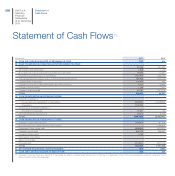 267
267 -
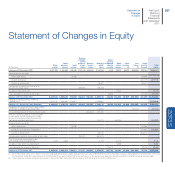 268
268 -
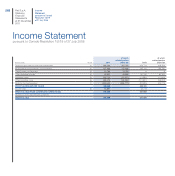 269
269 -
 270
270 -
 271
271 -
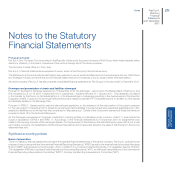 272
272 -
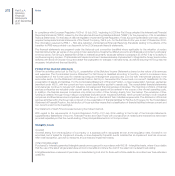 273
273 -
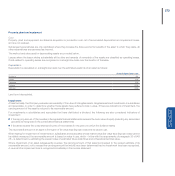 274
274 -
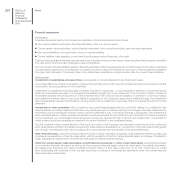 275
275 -
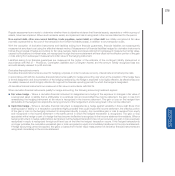 276
276 -
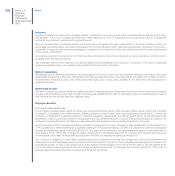 277
277 -
 278
278 -
 279
279 -
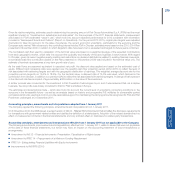 280
280 -
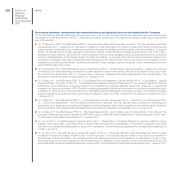 281
281 -
 282
282 -
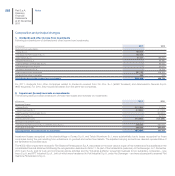 283
283 -
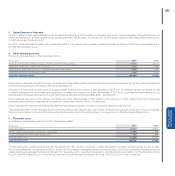 284
284 -
 285
285 -
 286
286 -
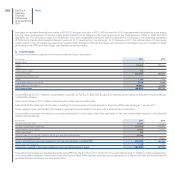 287
287 -
 288
288 -
 289
289 -
 290
290 -
 291
291 -
 292
292 -
 293
293 -
 294
294 -
 295
295 -
 296
296 -
 297
297 -
 298
298 -
 299
299 -
 300
300 -
 301
301 -
 302
302 -
 303
303 -
 304
304 -
 305
305 -
 306
306 -
 307
307 -
 308
308 -
 309
309 -
 310
310 -
 311
311 -
 312
312 -
 313
313 -
 314
314 -
 315
315 -
 316
316 -
 317
317 -
 318
318 -
 319
319 -
 320
320 -
 321
321 -
 322
322 -
 323
323 -
 324
324 -
 325
325 -
 326
326 -
 327
327 -
 328
328 -
 329
329 -
 330
330 -
 331
331 -
 332
332 -
 333
333 -
 334
334 -
 335
335 -
 336
336 -
 337
337 -
 338
338 -
 339
339 -
 340
340 -
 341
341 -
 342
342 -
 343
343 -
 344
344 -
 345
345 -
 346
346 -
 347
347 -
 348
348 -
 349
349 -
 350
350 -
 351
351 -
 352
352 -
 353
353 -
 354
354 -
 355
355 -
 356
356 -
 357
357 -
 358
358 -
 359
359 -
 360
360 -
 361
361 -
 362
362 -
 363
363 -
 364
364 -
 365
365 -
 366
366 -
 367
367 -
 368
368 -
 369
369 -
 370
370 -
 371
371 -
 372
372 -
 373
373 -
 374
374 -
 375
375 -
 376
376 -
 377
377 -
 378
378 -
 379
379 -
 380
380 -
 381
381 -
 382
382 -
 383
383 -
 384
384 -
 385
385 -
 386
386 -
 387
387 -
 388
388 -
 389
389 -
 390
390 -
 391
391 -
 392
392 -
 393
393 -
 394
394 -
 395
395 -
 396
396 -
 397
397 -
 398
398 -
 399
399 -
 400
400 -
 401
401 -
 402
402
 |
 |

Fiat S.p.A.
Statutory
Financial
Statements
at 31 December
2011
Notes
276
Inventory
Inventory consists of contract work in progress related, in particular, to long-term construction contracts between Fiat S.p.A. and Treno
Alta Velocità – T.A.V. S.p.A. (merged into Rete Ferroviaria Italiana S.p.A. from 31 December 2010) under which Fiat S.p.A. as general
contractor coordinates, organizes and manages the work.
Work in progress refers to activities carried out directly and is recognized through measurement of the total contract income on a
percentage completion basis, with the incremental portion of the work performed to date being recognized in the period. The cost-to-
cost method is used to determine the percentage of completion of a contract (by dividing the costs incurred by the total costs forecast
for the whole construction).
Any losses expected to be incurred on contracts are fully recognized in the income statement and as a reduction in contract work in
progress when they become known.
Any advances received from customers for services performed are presented as a reduction in inventory. If the value of advances
received exceeds inventory, any excess is recognized as advances under other debt.
Sales of receivables
Receivables sold in factoring transactions are derecognized if and only if the risks and rewards relating to ownership have been
substantially transferred to the buyer. Receivables sold with recourse and without recourse that do not satisfy this condition remain in
the statement of financial position, even if they have been legally sold; in such cases, a liability for the same amount is recognized for
advances received.
Assets held for sale
This item includes non-current assets (or assets included in disposal groups) whose carrying amount will be recovered principally
through a sale transaction rather than through continuing use. Assets held for sale (or disposal groups) are measured at the lower of
their carrying amount and fair value less disposal costs.
Employee benefits
Post-employment benefit plans
The Company provides pension plans and other post-employment benefit plans to its employees. Pension plans in which the Company
is obliged to participate under Italian law are defined contribution plans, while other post-employment benefit plans, in which the
Company’s participation is generally subject to collective bargaining agreements, are defined benefit plans. Costs associated with
payments to defined contribution plans are recognized in the income statement when incurred. Defined benefit plans are based on an
employee’s working life and on the salary or wage received by the employee over a predetermined period of service.
Until 31 December 2006, the leaving entitlement payable to employees of Group companies in Italy (Trattamento di Fine Rapporto or
“TFR”) qualified as a defined benefit plan. Legislation relating to TFR was amended by Law 296 of 27 December 2006 and subsequent
decrees and regulations issued in the first half of 2007. As a result of those changes, and specifically with regard to companies with 50
employees or more, TFR is only considered a defined benefit plan for benefits accrued prior to 1 January 2007 (and not yet paid out as
at the balance sheet date), while benefits accruing after that date are classified as defined contributions.
The Company’s obligation to fund defined benefit plans and the associated annual cost recognized in the income statement are
determined on an actuarial basis using the projected unit credit method. The portion of net cumulative actuarial gains and losses which
exceeds the greater of 10% of the present value of the defined benefit obligation and 10% of the fair value of the plan assets at the
end of the previous year is amortized over the average remaining service lives of employees (the “corridor approach”). The portion of
actuarial gains and losses that does not exceed this threshold is deferred.
